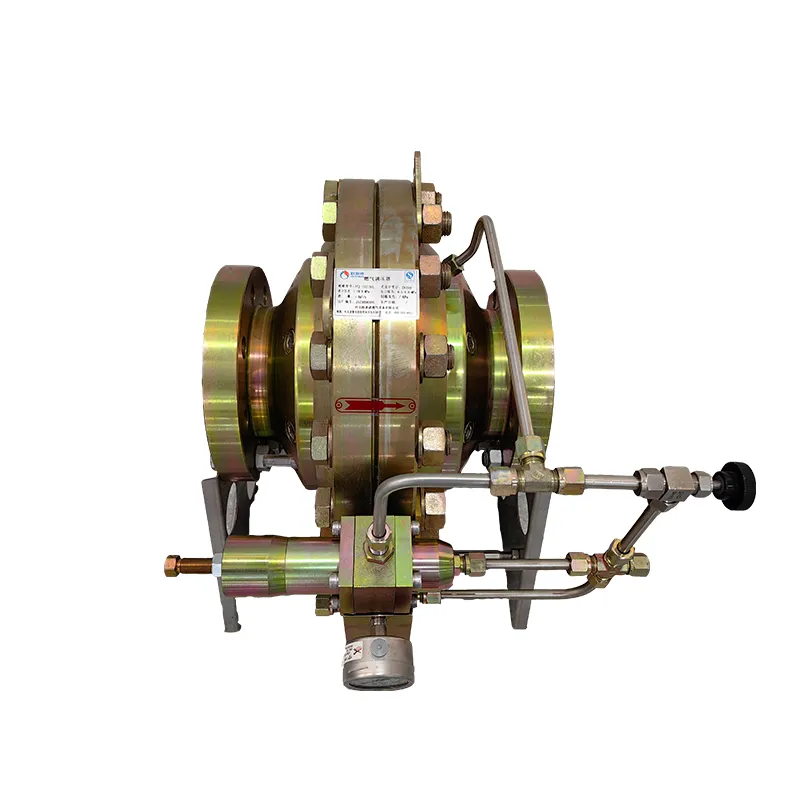
Dec . 02, 2024 04:35
Back to list
Natural Gas Pressure Regulator for Efficient Gas Flow Management and Safety
Understanding Natural Gas Pressure Regulators
Natural gas is one of the most widely used energy sources across the globe, playing a crucial role in powering homes, businesses, and industries. However, for natural gas to be safely and efficiently delivered, managing its pressure is of the utmost importance. This is where natural gas pressure regulators, or مخفض ضغط الغاز الطبيعي in Arabic, come into play. These devices are integral to the safe handling and distribution of natural gas, ensuring that it reaches consumers at the appropriate pressure levels.
What is a Natural Gas Pressure Regulator?
A natural gas pressure regulator is a mechanical device designed to automatically control and reduce the pressure of natural gas. It ensures that the gas is maintained at a safe and usable level, regardless of fluctuations in input pressure. These regulators are vital in both residential and industrial applications, safeguarding equipment and ensuring safety for users.
How Do Natural Gas Pressure Regulators Work?
Pressure regulators operate on a fundamental principle of balancing the pressure of the gas upstream (input) with the downstream (output) pressure. When gas enters the regulator, it encounters a diaphragm connected to a spring mechanism. As the gas flows in, it pushes against the diaphragm, which compresses the spring. Based on the setpoint of the regulator, when the downstream pressure exceeds the desired level, the diaphragm moves to a position that reduces the gas flow, thereby lowering the output pressure.
Conversely, if the pressure drops below the setpoint, the diaphragm moves to allow more gas through. This self-regulating mechanism ensures a constant and reliable output pressure, contributing to the overall safety and efficiency of natural gas distribution systems.
Types of Natural Gas Pressure Regulators
There are several types of natural gas pressure regulators, each designed for different applications and requirements. The most common types include
مخفض ضغط الغاز الطبيعي

1. First-Stage Regulators These are installed at the inlet of a gas system, where they reduce the high pressure from the gas main to an intermediate pressure. They are typically used in commercial and industrial settings where gas is used at higher pressures.
2. Second-Stage Regulators These regulate the intermediate pressure to a lower, end-use pressure suitable for residential appliances. They ensure that the gas delivered to homes and businesses is at safe and manageable levels.
3. Combination Regulators These integrate the functions of both first and second-stage regulators, providing a compact solution for systems with limited space. They simplify installation and maintenance processes.
Importance of Natural Gas Pressure Regulators
The significance of pressure regulators cannot be overstated. Firstly, they enhance safety by preventing overpressure situations that could lead to leaks, fire hazards, or explosions. By maintaining regulated pressure, these devices protect appliances and equipment, ensuring their longevity and efficiency.
Secondly, regulators contribute to the efficiency of natural gas systems. By effectively managing pressure, they help in optimizing the performance of gas-powered devices, resulting in lower energy costs and reduced emissions.
Moreover, with the growing adoption of natural gas as a cleaner alternative to other fossil fuels, pressure regulators play a critical role in promoting responsible energy use. They support the transition towards a more sustainable future by ensuring that natural gas is utilized effectively and safely.
Conclusion
In summary, natural gas pressure regulators are vital components in the safe and efficient delivery of one of the world’s most important energy sources. They serve to protect users, enhance system efficiency, and promote environmental responsibility. As the demand for natural gas continues to grow, understanding and maintaining these critical devices will be essential for ensuring that we harness this energy resource safely and sustainably. Whether in residential settings or large industrial applications, natural gas pressure regulators will remain a cornerstone of safe energy management and distribution systems.
Next:
Latest news
-
Safety Valve Spring-Loaded Design Overpressure ProtectionNewsJul.25,2025
-
Precision Voltage Regulator AC5 Accuracy Grade PerformanceNewsJul.25,2025
-
Natural Gas Pressure Regulating Skid Industrial Pipeline ApplicationsNewsJul.25,2025
-
Natural Gas Filter Stainless Steel Mesh Element DesignNewsJul.25,2025
-
Gas Pressure Regulator Valve Direct-Acting Spring-Loaded DesignNewsJul.25,2025
-
Decompression Equipment Multi-Stage Heat Exchange System DesignNewsJul.25,2025

